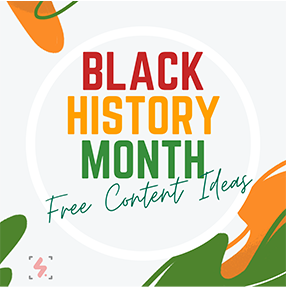Student Voice in Video and Film: Allowing Students to Produce a Passion Project
Overview
We are nearing the end of another school year, that as always, seems to have flown by. That means that many of us are looking for a good project to round out the year. There are so many options, but they all have pros and cons with the biggest con being… We are exhausted and creating and grading another project just doesn’t get us excited.
Here is what I am doing for my mixed Level 1 and 2 classes for their final major project, so hopefully you can use this with your students as well. The best part is, I have come up with a way to make grades a breeze.
Starting tomorrow my students will spend the next month working on their choice from the following projects, which if done correctly will demonstrate their understanding of the three main phases of production.
I am allowing them to either work alone, with a partner, or in a group of no more than four. I have denoted which can be done in a group and which I think are better served in a smaller team. After you read over them, take what you want, and leave what you don’t. Please leave some comments below to let us know what your thoughts are, especially if you have tried these before.
Selecting the Team
Students will first need to determine if they want to work alone or with a team. This can be the hardest part of a project, especially in high school, because there are so many variables that can impact a single student’s contributory effect on the group. This means that I talk to my students about choosing partners that are committed to success, who are able to work on or off campus, and who understand that they are not getting a grade if they don’t carry their weight.
If a student seems to be a drag on the group, or simply knows that they will not be able to contribute as much to the group, I encourage them to take on a project that can be done alone and at school during class time.
Let me tell you what my biggest challenge has been over the years…. Realizing that not all students are as passionate about filmmaking and storytelling as me.
I know, it’s hard to fathom, but there are just some students who take our classes simply to get a grade. Maybe they thought it was going to be an easy “A” or whatever, but they are simply not willing to come in early, stay late, or even to put away their phone, in order to be successful.
Because of these students, I have had to make sure that I include project options that can be done wholly in class, during the course of the regular school day. My thinking used to be (and still is to a large degree) that students will learn more in an environment where they have the chance to fail, i.e. shooting a short film in a classmate’s basement after school. But that isn’t a reality or viable option for some students, so again, I had to come up with projects that be done in class.
Project Options
After choosing their partners, students get to pick from the following menu of projects.
How To Video
Creating a "How To Video" allows students to produce a tutorial video on a creative or technical topic of their choice, whether individually or in partnership with another student. Through careful planning, scripting, shooting, and editing, students can develop valuable skills in video production while sharing their knowledge with viewers. This project encourages creativity, teamwork, and critical thinking, as students aim to create engaging and informative tutorials. Ultimately, producing a "How To Video" is a practical and creative way for students to improve their communication, presentation, and technical skills in video and film production.
I remember doing “How to Make Peanut Butter Cornflake Cookies” when I was in college and I still make those cookies for my family around the holidays. This was a great assignment that I have carried with me for years. (Individual, partner, or group)
Promo Video
Creating a promotional video for a local business is a meaningful and rewarding project for video and film students. It involves brainstorming ideas, researching the business, planning the video shoot, capturing footage, and editing the final product. Students can use various techniques and styles to create a compelling and professional-looking video. The final result can be used by the local business for marketing purposes. This hands-on project allows students to gain real-world experience and develop their creative and technical skills while supporting their local community.
I think this is a great project, especially in a smaller school district, where the effect of the video would be magnified in the local community. It would generate buzz about the business, but it would also bring good recognition to the video production program. It might even be worth it to see if the business would be willing to make a donation to the program… if they like the video they receive. (Partner only)
Sports Highlight Reel
The "Sports Highlight Reel" project is a dynamic and engaging opportunity that develops technical skills, creative thinking, and storytelling abilities. It challenges students to produce a captivating video that showcases the best moments of a particular game, match, or season using slow-motion, music, and sound effects. Students can express their personal creative vision, showcase their understanding of the sport, and create a visually appealing and emotionally impactful highlight reel.
I make this an individual only project because in the real world, this is an individual only job a lot of the time. If you want to follow a guy who is doing it well, check out Pete Gottschalk on YouTube and social media. In this video, he talks through How He Got His Job with MLB.
Sketch Comedy Video
Creating a sketch comedy video is a great option for students, though it is probably the hardest video on this list. Good comedy is hard to do and it isn’t something that I have found most high school students capable of doing well. That being said, it is worth the challenge, and they usually have a lot of fun doing it.
A good sketch involves physical humor, clever wordplay, and other comedic techniques to make the audience laugh. I recommend bringing in props, costumes, and even makeup for visual humor. I think that a good sketch begins with a great character. If the sketch is done well it will help students develop their technical skills, creativity, collaboration, and storytelling. And again, it is a fun and educational opportunity for video and film students. (Group only)
Character Profile
A character profile is a video project that enables students to tell the story of a person through interviews, b-roll footage, and creative elements. It goes beyond a simple biography and aims to create a multidimensional and emotionally engaging portrait of the subject. It encourages students to develop skills in empathy, storytelling, and video production, while fostering creativity and critical thinking. A well-crafted character profile has the power to evoke empathy, provoke thought, and inspire reflection, making it a valuable tool for teaching video and film students.
Personally, I think this is one of the best things you can have your students do. Not only do they get the skills needed to become effective visual storytellers, but it gives you content to put on a school morning show. A well done video that reveals something engaging and interesting about the subject gives voice to a student or group of students and could improve your school culture by connecting students through story. (Partner or individual only)
A Student Short
A student short film project challenges video and film students to tell a complete story in less than five minutes. It encourages creative storytelling techniques such as non-linear narratives, unreliable narrators, and suspenseful pacing. This allows students to experiment with storytelling approaches and hone their technical skills while working within practical production constraints. It is an opportunity for students to think critically about story structure, character development, and visual aesthetics. The project enables students to showcase their talents in a concise and impactful way, making it a valuable learning experience for aspiring filmmakers.
I make the mistake of thinking that this is why most students even get into my class, to make short films. And that might have been true initially, but over the past few years, thanks to the growth of short form content, my students have decided that they can become “Instafamous” or some sort of TikTok star. They don’t even realize that for most of them, they are just going to be replicating something created by someone else. I hope that many of them will take this on in my class, just because I don’t want to see it die. (Group only)
Wildcard
I open the door wide with this one. Students can dive headfirst into their passion project, the video that they got into the class to produce. It has to be school appropriate and it will likely be shared publicly through our social media channels, so they need to create something that people actually will want to watch. It could be something as simple as a music video, to something as audacious as a documentary on the impact of school nutrition on student learning. It could even be something like an video essay on the use of symmetry in Wes Anderson films. I really don’t care what the students do, just as long as they are working, learning, and feel like they have a say in what they are doing.
Assessing the Work
Students are allowed to work together to write and shoot, but each student will be responsible for editing their own submission. This gives me a look at what each student can do in Adobe Premiere Pro. In my school, students take the Adobe test for their End of Pathway Assessment, so making sure each student gets as much seat time with Premiere as possible is one of my major goals.
As for actual grading, I want that part to be easy, so I recently devised a new method. I am hoping that it doesn’t fail, but I am going to give it a trial run here at the end of this year before rolling it out full scale next year.
So, how are they being graded?
Any work that is submitted on time, that shows careful and intentional effort in the final product, will earn a 7.5 out of 10 possible points.
That’s it. Turn it in, with moderate effort, and you earn a “C”. If you are happy with that, you can stop there, but if you want a higher grade, you have to go a little further.
In order for a student to earn a “B” or an “A”, they will need to submit a written reflection that goes into detail about what you learned in the process of creating this content. (See “Writing Prompt: Reflecting on the Video Production Process” below for more information.) This additional reflection can earn them between .5 and 2.5 points.
If a student submits the assignment within two class periods of the deadline, they will earn a six out of a possible ten points. At this point they are required to submit the reflection in order to earn the additional point, all the way up to an 8.5/10.
Writing Prompt: Reflecting on the Video Production Process
For the reflection I have students reflect on the video that they produced, from the initial idea to the final product. In the reflection they should discuss what they learned during pre-production production, and post-production while thinking about what they enjoyed most and what they found to be the most challenging.
They are to use the following questions as guides for the reflection:
Challenges faced: Reflect on the biggest challenges you faced during the video production process. Was it difficulty with storyboarding, finding suitable locations, managing time and resources, or dealing with technical issues? Describe these challenges in detail and how you overcame them. Did you seek help from peers, teachers, or external resources? How did you problem-solve and adapt to overcome these challenges?
Proud Moments: Share what you are most proud of about your video. Was it a particular scene, a creative decision, or a technical skill you learned and applied? Describe why this aspect of your video production stands out to you and how it reflects your growth as a filmmaker.
Areas for Improvement: Be honest about what you are least proud of in your video. Was there a scene that did not turn out as expected, or a technical issue that you struggled with? Reflect on what you could have done differently and how you could improve in the future.
Lessons Learned: Share what you have learned during pre-production, production, and post-production phases of your video project. Did you gain insights into the importance of planning and organization during pre-production? Did you learn valuable skills in cinematography, editing, or sound design during production? Did you discover the significance of attention to detail during post-production? Reflect on these lessons and how they have contributed to your growth as a filmmaker.
Advice for Others: Based on your experience, provide advice to other students who are planning to make a video. What tips or strategies would you share with them to help them succeed in their own video production projects? Reflect on what you wish you had known before starting your project and any advice that you would give to your peers to help them navigate their own video production journey.
I emphasize that the reflection should be well thought out and introspective, demonstrating a thorough understanding of the video production experience. It should fall between 225 and 250 words, excluding the questions. And above all else, it should be honest. They cannot BS a BS’r.
Conclusion
Again, I have no clue if this is going to work, but I'm willing to give it a try. Drawing from my past experiences of attempting something similar, I recognize that the timing of my current attempt may be crucial for its success. I hope to provide a follow-up during the summer, once the grades have settled, to evaluate the results. Despite the possibility of it being a colossal fail, I'm also aware that it could turn out to be a brilliant idea. Taking calculated risks and learning from both successes and failures is important to me. With an open mindset, I am willing to wait and see how it unfolds.
Meet the Author, JOSH DEMPSEY
Josh Dempsey is a video and film teacher at Marietta High School in Marietta, Georgia. With nearly years of experience in the classroom, Josh is just as excited as his students to keep learning about the power and possibilities of this visual medium. He invites you to follow his students and their work online by following them on social media @bdn_marietta.
Josh loves traveling with his wife, Megan, and their two kids and more pets than should be allowed. If you want to follow their adventure and get some tips and tricks for RV travel and epic road trips, head over to their website at eastrollswest.com.










Got shaky footage? No problem! In this quick tutorial, learn how to use Warp Stabilizer in Adobe Premiere Pro to smooth out your shots effortlessly.